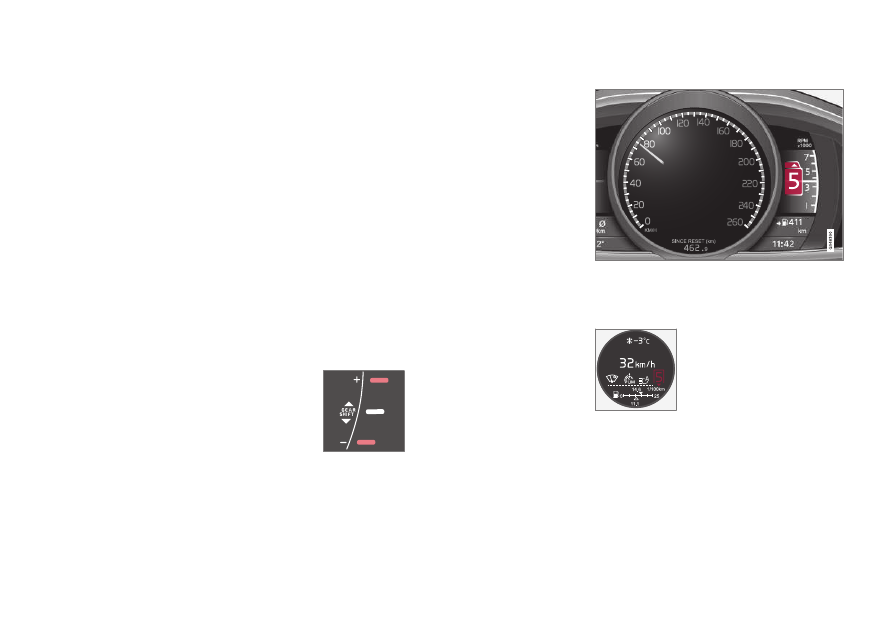Volvo S60 Cross Country (2018 year). Manual - part 16

STARTING AND DRIVING
* Option/accessory.
277
Reverse gear inhibitor
The reverse gear inhibitor hinders the possibility
of mistakenly attempting to engage reverse gear
during normal forward travel.
•
Follow the gearing pattern printed on the
gear lever and start from neutral position, N
before moving it to R position.
•
Engage reverse gear only when the car is
stationary.
Related information
•
•
Transmission fluid - grade and volume
(p. 411)
Gear shift indicator*
The gear shift indicator notifies the driver when it
is appropriate to engage the next higher or lower
gear.
An essential detail in connection with environ-
mental driving is to drive in the right gear and to
change gear in good time.
An indicator is available as an aid on certain vari-
ants - GSI (Gear Shift Indicator) - which notifies
the driver when it is appropriate to engage the
next higher or lower gear in order to obtain the
lowest possible fuel consumption.
However, taking into consideration characteristics
such as performance and vibration-free running,
it may be advantageous to change gear at a
higher engine speed. The framed number indi-
cates the current gear.
Manual gearbox
Gear shift indicator for manual
gearbox. Only one marker is
illuminated at a time - during
normal driving it is only illumi-
nated in the centre.
At the recommended upshift
the cursor illuminates "+", and at the recom-
mended downshift the cursor illuminates "-"
(marked red in the illustration).
Automatic gearbox
Combined instrument panel "Digital" with gear
shift indicator.
The framed number indicates the current gear.
With "Analogue" combined
instrument panel, the gear
positions and indicator arrows
are displayed in its centre.
Related information
•
•